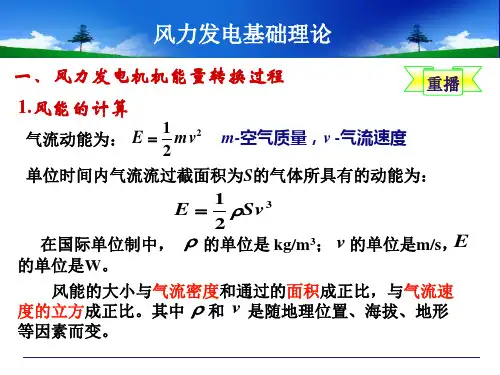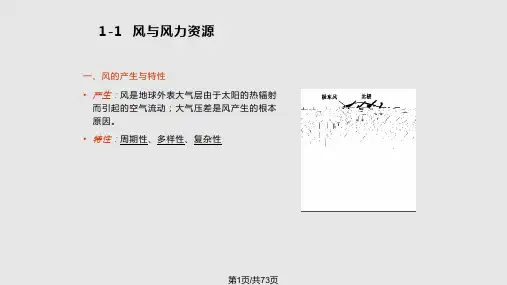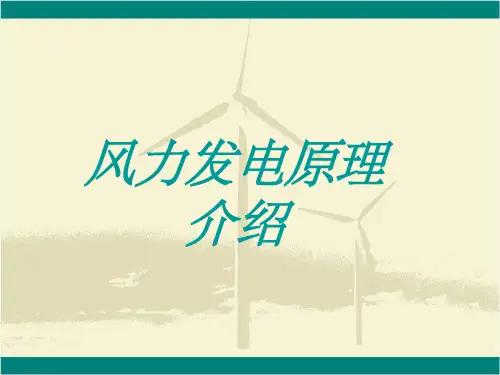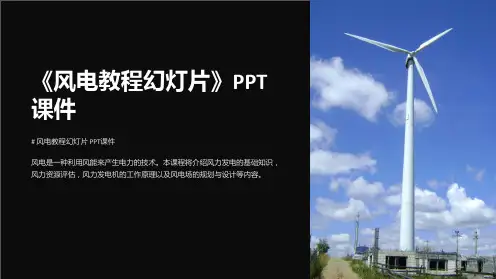采用合适时距T的平均风速(例如10分钟),它在一段观测期
内的变化一般不明显。
实际平均风速是由在相应的时距中,将其瞬时风速相互抵消后
所得的综合结果,采用不同的平均时距就会得到不同的平均风速,
时距愈大,平均风速的变化愈小,而相应的平均风速最大值也愈小。
为了得可以相互比较的平均风速记录,气象上规定一个统一的平均
时距,世界气象组织和我国规定将10分钟平均时距作为平均风速的
标准时距。由于历史的原因和条件的限制(如目测),在一些报表
和项目中使用的是2分钟或更多种的平均风速,使用时必须加以注
意。
-
34
风力等级表
风力 等级
0 1 2 3 4
自由海面状况 浪高
海上船只征象 陆地地面物征象
一般(米) -0.1
最高(米) -0.1
-
GOLDWIND
16
GoldWind 62/1200 技术参数
GOLDWIND
运行数据 切入风速 额度风速 切出风速 抗最大风速
叶轮
电机
3 m/s 12 m/s 25 m/s 59,5 m/s
塔架 -
直径 扫风面积 转速范围 叶片数量 叶片类型
功率控制 刹车系统
类型
结构 额定功率 额定电压 绝缘等级
Is typically 6 to 10 times the wind speed.
-
25
风机如何在风中工作
-
26
风吹过风轮后会怎样
根据空气对叶轮的反作用
转轮旋涡气动模型
-
27
风机尾流
-
28
单位面积中的风能
The graph shows that at a wind speed of 8 metres per second we get a power (amount of energy per second) of 314 Watts per square metre exposed to the wind (the wind is coming from a direction perpendicular to the swept rotor area). At 16 m/s we get eight times as much power, i.e. 2509 W/m2. The table in the right gives you the power per square metre exposed to the wind for different wind speeds.








